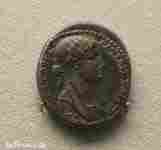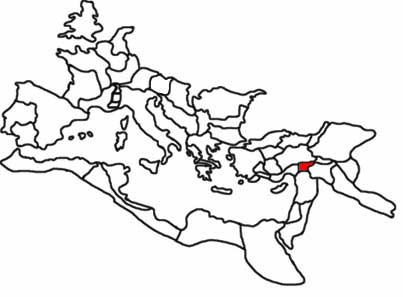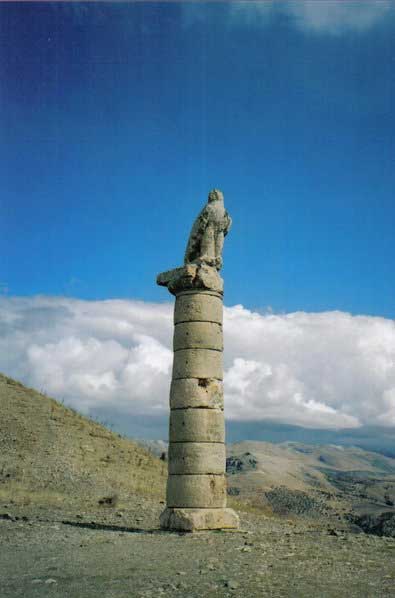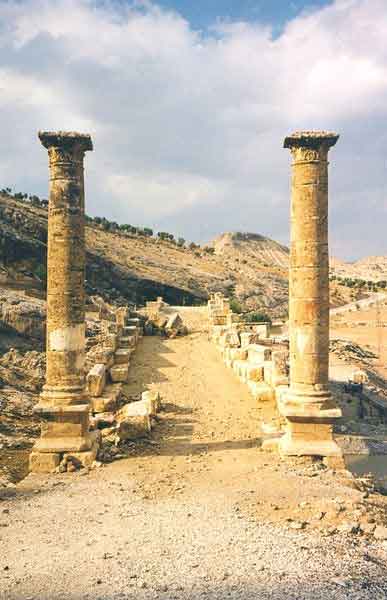.
Commagene (Greek Kομμαγηνη Kommagênê) was a small kingdom, located in modern south-central Turkey, with its capital at Samosata (modern Samsat, near the Euphrates). It was first mentioned in Assyrian texts as Kummuhu, which was normally an ally of Assyria, but eventually annexed as province in 708 BC under Sargon II.

The Hellenistic kingdom, bounded by Cilicia on the west and Cappadocia on the north arose in 162 BC, when its governor Ptolemy broke free from the disintegrating Seleucid Empire. His dynasty was related to the Parthian kings, but his descendant Mithradates Callinicus (100 - 69 BC), embraced the Hellenistic culture and married Laodice, a Seleucid princess, thus claiming dynastical ties with both Alexander the Great and the Persian kings. Their son Antiochus Theos (69 - 40 BC) supported Pompey against the Parthians, and in 64 BC was rewarded with additional territories. He was able to deflect Roman attacks from Mark Antony, whom he eventually joined in the Roman civil war, but after Antony's defeat to Augustus, Commagene was made a Roman client state. In AD 17 Tiberius deposed Antiochus III, but Caligula reinstated his son Antiochus IV who reigned until 72, when Vespasian deposed the dynasty. Their descendants lived on prosperously in Greece, where local benefactor Caius Julius Antiochus Philopappus (Philopappus monument) still has a monument in Athens.

Roman province of Commagene, 120 AD
Commagene is famous for its sanctuary located on Mount Nemrud (Nemrud Dagi), an enormous complex on a mountain-top founded by Antiochus Theos featuring giant statues of the king (whose epithet means God), surrounded by gods. The location of Antiochus' tomb is one of the mysteries of archeology and recent research has revealed that on the peak of Nemrud Mountain close to the mausoleum there are some cavities that could hold the tomb of the king. Nemrud is a testament to Hellenistic syncretism at its peak, each god being a synthesis of classical Greek and Persian gods (e.g. Apollo-Mithras-Helios) and was meant to be no less than the "home of the gods", making Kommagene and its kings a spiritual center for the Middle East. The statues were however destroyed by the Romans, and the sanctuary fell into oblivion, being rediscovered only in the 19th century and now a site of utmost interest for archaelogists.

Figure from the short lived Commagene kingdom in Nemrut National Park, Turkey. (C) Gerry Lynch, 2003.
Lucian, influential Greek satirist, was born in Samosata c. AD 125.

Bridge of Septimius Severus
Images of the Philopappus monument in Athens
QTVR Panoramas of the Pnyx & Philopappus Monument
| Ancient Greece
Science, Technology , Medicine , Warfare, , Biographies , Life , Cities/Places/Maps , Arts , Literature , Philosophy ,Olympics, Mythology , History , Images Medieval Greece / Byzantine Empire Science, Technology, Arts, , Warfare , Literature, Biographies, Icons, History Modern Greece Cities, Islands, Regions, Fauna/Flora ,Biographies , History , Warfare, Science/Technology, Literature, Music , Arts , Film/Actors , Sport , Fashion --- |
Retrieved from "http://en.wikipedia.org/"
All text is available under the terms of the GNU Free Documentation License


